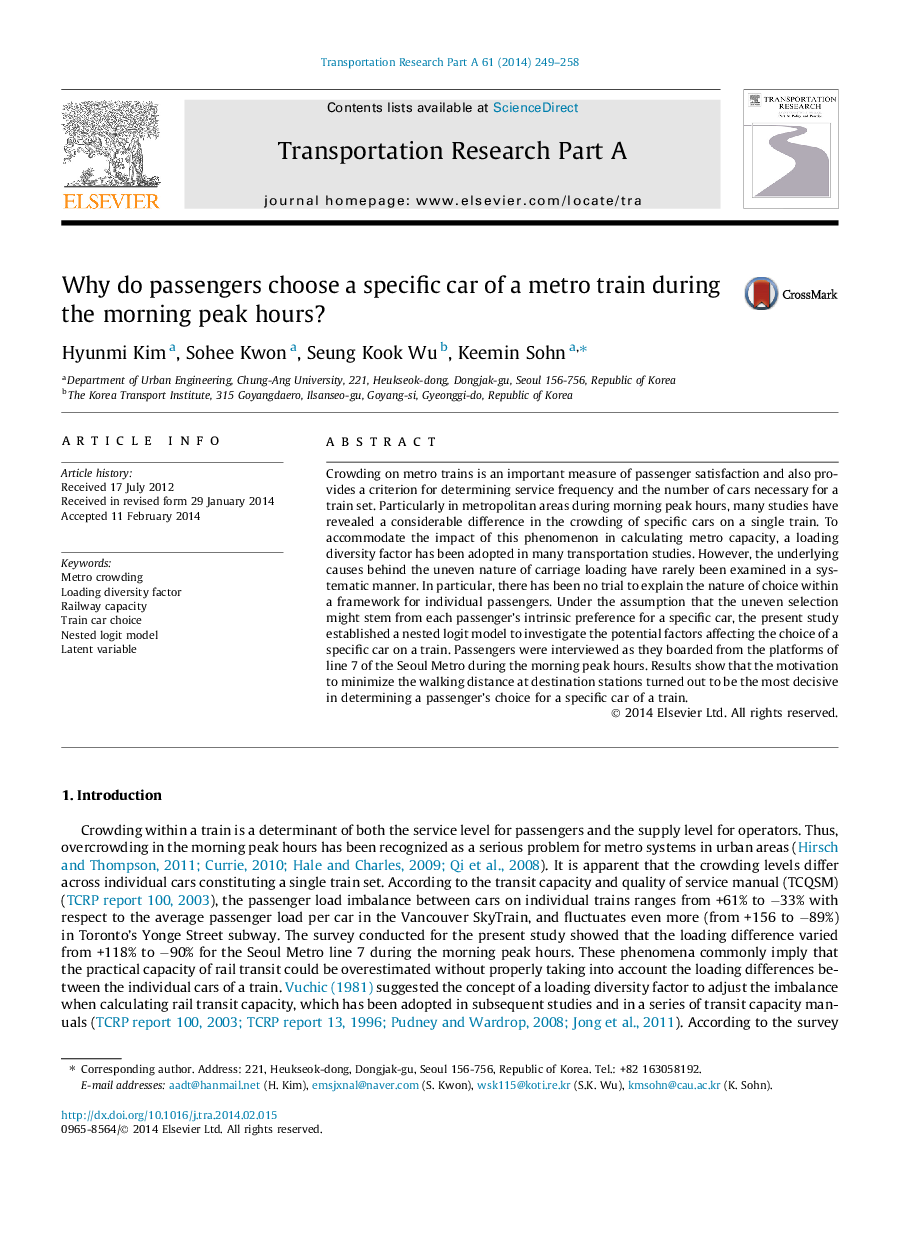| Article ID | Journal | Published Year | Pages | File Type |
|---|---|---|---|---|
| 310750 | Transportation Research Part A: Policy and Practice | 2014 | 10 Pages |
•Causes behind the uneven passenger loading across metro cars were examined.•Minimizing the walking distance at destination stations was the most decisive cause.•White collar young females with a compulsory trip purpose more choose a specific car.
Crowding on metro trains is an important measure of passenger satisfaction and also provides a criterion for determining service frequency and the number of cars necessary for a train set. Particularly in metropolitan areas during morning peak hours, many studies have revealed a considerable difference in the crowding of specific cars on a single train. To accommodate the impact of this phenomenon in calculating metro capacity, a loading diversity factor has been adopted in many transportation studies. However, the underlying causes behind the uneven nature of carriage loading have rarely been examined in a systematic manner. In particular, there has been no trial to explain the nature of choice within a framework for individual passengers. Under the assumption that the uneven selection might stem from each passenger’s intrinsic preference for a specific car, the present study established a nested logit model to investigate the potential factors affecting the choice of a specific car on a train. Passengers were interviewed as they boarded from the platforms of line 7 of the Seoul Metro during the morning peak hours. Results show that the motivation to minimize the walking distance at destination stations turned out to be the most decisive in determining a passenger’s choice for a specific car of a train.
